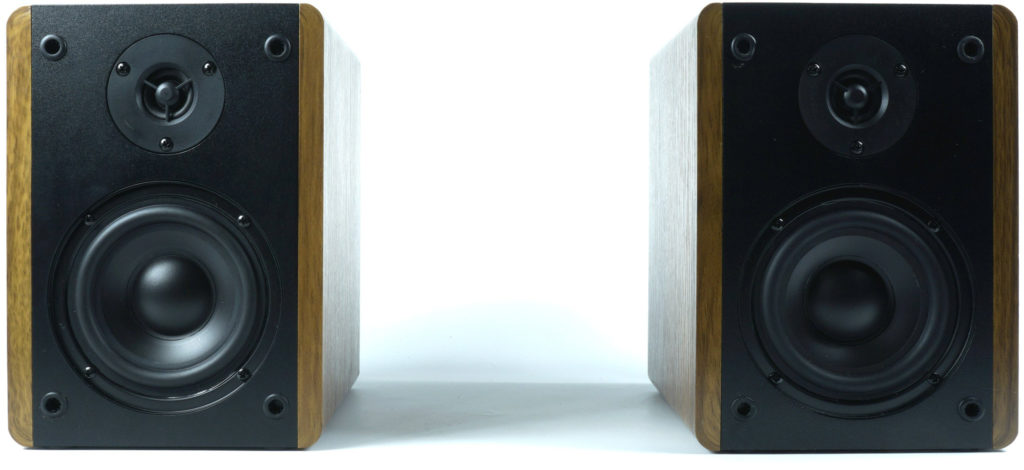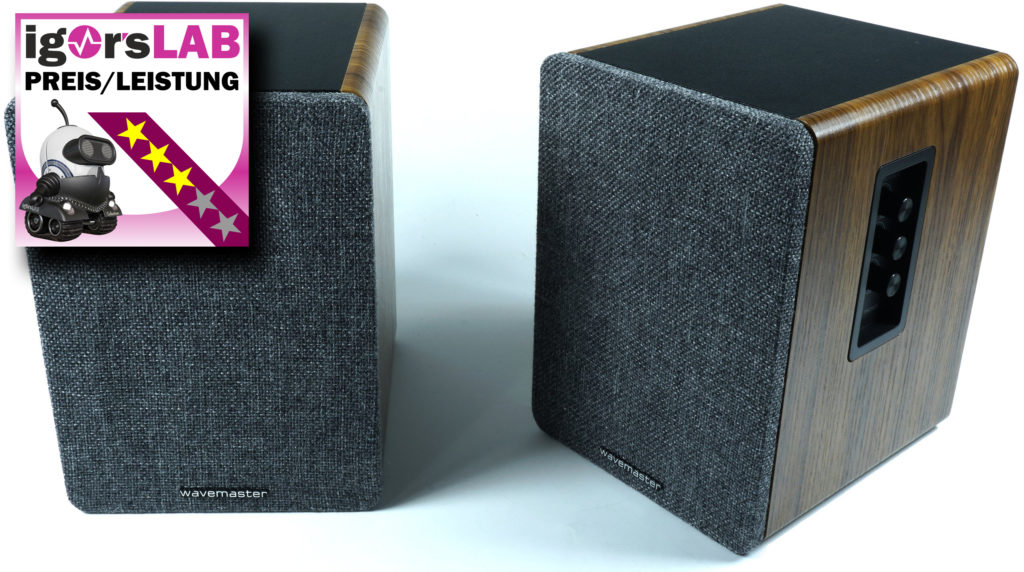Frequency range and response
This time I limit myself to a purely subjective assessment due to time constraints, which isn't that bad at all, since the target group is placed in the mainstream anyway. The standardised, generally suitable bathtub tuning is certainly an answer to this. The low-cut at 50 Hz is necessary because otherwise the level stability would suffer. There is still enough for the big bass drum, after all. What else? So we come directly to the subjective evaluation of things. The assessment is based on the sound setting at medium volume that is subjectively best suited to the room. And for the very curious: the system ran as usual before the measurement, of course to the delight of the neighbours, for almost 72 hours in a continuous loop.
Bass reproduction
Test the deepest bass in the subcontraoctave (16.4 Hz to 32.7 Hz) with a recording of Bach's Toccata and Fugue in D minor (19 and 25 Hz) and the Festival Overture 1812 by Tchaikovsky (10 Hz and 12.5 Hz). The same applies to the lower ranges of the contraoctave (32.7 to 65.4 Hz). The big bass drum (kick drum), which is a welcome companion in underground music and is usually played at about 55 to 60 Hz is tuned, this assessment is then rounded off.
The bass is simply gone from about 50 Hz downwards, which is physically justified. From approx. 50 Hz it becomes a little bit fatter, but remains a little bit thin. You don't even have to think about things like the subcontraoctave, because here you find complete non-existence. But for the big bass drum of conventional U-music it is still loosely enough. The character is rather dry and not overexcited. The system has a little trouble with the amplifier power at higher volumes, keyword level stability.
The upper bass up to 150 Hz, which also contains the great octave (65.4 to 130.8 Hz), contains the basic voice frequency of the male voice and is very important for the natural reproduction of male vocals.
This range sounds quite good, because from about 100 Hz the mail goes off again. The male vocals are very full, but still clean enough, even if everything sounds a bit too fat. Surprisingly, the instruments are only slightly falsified. All in all, the resolution is still quite high and allows orchestral pieces, rock, pop and jazz of all colours to be performed appropriately. However, the location should be chosen carefully if you want to avoid annoying modes and a scrape, because the resonance frequency of the small speaker is quite high.
Midrange
The lower mids (also fundamental range) are around 150 to 400 Hz. Together with the already mentioned upper bass, this range plays a very important role for the subjectively felt warmth or Fullness of the sound image. The basic voice frequency of female voices can be found in this range.
Here again there is no serious reason for criticism, it just dumbles lightly. Dust dry and free of resonances is not that, but this is where the limits of the cheap chassis lie. Female vocals, on the other hand, can almost shine, and they certainly get to the point. The timbre of the voices and instruments is anything but neutral, but never cold, but rather a little too warm. The further upward trend is also free of real criticism. The precision is only sufficient to average, but makes the system a good all-rounder for work and fun, if it should not be too loud.
The upper mids between 400 Hz to about two KHz contain a mark at one KHz, which is still used as a reference for many measurements. Unfortunately, this is also often noticeable with cheaper devices, as the manufacturers often try to overemphasize this frequency. This area also plays a not insignificant role in gaming, and a balanced reproduction contributes not insignificantly to a good spatial resolution.
The stage and the subjectively perceived quality of the spatial resolution are sufficient, but not quite real middle class. Here too, of course, the price comes into play. An orchestra appears (purely subjectively) to be slightly limited in its line-up, which makes it impossible to locate individual instruments clearly and unambiguously at different overall levels. Stage and depth staggering are certainly appropriate to the price, but nothing more than that. However, speech reproduction in this area hardly suffers any real loss, no matter how many sources are mixed.
High frequency range
Between two and about 3.5 KHz, the human ear is most sensitive, especially since this range of lower frequencies is responsible for the good overtone reproduction of the human voice. This frequency range is in fact decisive for the recognition of a voice or an instrument; in this context one also speaks of the respective tone colour.
The playback is also free of criticism and the speech intelligibility and the quality of the vocals is quite convincing. Audible overemphasis or level drops in the high frequencies cannot be excluded due to the simple frequency separation, but this is within reason. The use of the tweeter is quite fluid and difficult to perceive. But one will already pay attention to the ideal installation location and if necessary because the small domes without a big waveguide are very directional. So if you place the speakers far apart, you should turn them correctly in the direction of the listening position, it's worth it. Only the sofa upholstery should be removed, this is an acoustic Waterloo for the tweeter.
The medium heights (3.5 to six KHz) decide whether speech reproduction is successful or unsuccessful as a whole, because the S and sibilants fall into this range. The upper heights then reach up to approx. ten KHz to go to super high frequencies.
Tweeter and super high frequencies are useful, even if the speakers act a bit uninspired, especially the higher it goes. Sibilants and breathing sounds are reproduced quite well, but not extremely overemphasized or even swallowed. It never sounds too pointed or even metallic, but still natural. Stringed instruments are also not flushed forward or into the orcus and rather delicate strings are not degraded to dull recorders. A drum set remains one, right up to the softly stroked jazz broom, even if the quality of the high tone cannot pull out any trees.
Summary and conclusion
Nearly 70 Euros are due and this price is really honest. Somewhere the limit of where you can still get acceptable quality is simply reached, if the provider means well with you. If you want to save even more, don't be surprised if you suddenly fall back on boring plastic and cheap circuit boards with built-in carnival technology. If cheap, then better so than too cheap and trash can compatible. I wouldn't declare this as a buying tip, because if you have 70 Euros, you usually have a hundred. Because then there is much more that can be done. You just have to want it.
However, anyone who follows the same maxim and would rather afford a 70 euro system instead of the usual acoustic 50 euro plastic fire accelerator is welcome to take it. Because he receives a really appropriate equivalent value. This is why there is also the price/performance award for appropriate implementation. Sure, there is still a lot of air at the top, but exactly the next step costs a little. If you don't have room for a Wavemaster Mini Neo, you'll certainly find it here and later on you'll be happy sitting in your armchair. This can also be left as a conclusion. Not any more, but no trash either. Unfortunately, there is far too much of that. And big brother Edi? Doesn't sound much better either.



































Kommentieren